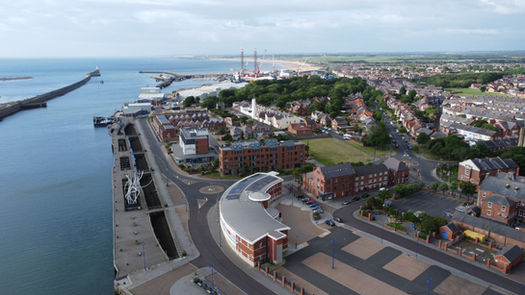BLY001
Blyth
Low Quay
Low Yard
Blyth
55.127543, -1.500190
Useful Links:
Opened:
1750
Closed:
Owners:
Edmund Hannay (1750 - 1800), Davison family (1802), John Manners & Bates
Types built here:
Customers (Not Exhaustive):
Estimated Output:
Construction Materials:
Wood
Status:
Redeveloped
Created:
Last Updated:
29/06/23
12/06/25
Description
The first shipyard in Blyth was located at the Low Quay, which is nowadays at the Quay Road near Wellington Street East.
It was opened by Edmund Hannay around 1750, and grew "in considerable eminence as a builder". He was born at Cupar in Scotland and was a shipwright until 1745 when the rebellion took place. at this time he left southwards and hid in the ruins of Bothal Castle. Hannay built his network and gained the trust of Justice Warson, who employed him to build a sloop for his affairs. His business then continued.
His vessels were known to be high quality, even with only a few builders at the yard. The ships were also known to need little maintenance as per Wallace's History of Blyth. His reputation must have grew quickly, as by 1780 he owned the Hanney's Farm estate just west outside the town. He had two sons but outlived them and both died unmarried in 1791. Mr Hannay also had two daughters, one of whom was married to Edward Watts who was another Blyth shipbuilder.
Edmund died in 1800, and his shipyard was taken over by the Davison family in 1802. This is presumably the same Davison's who ran the yard near to the Ballast Quay slightly north. Little else is known about the Davison's work at the Low Yard, though there is a notice in 1818 concerning an Edward Davison who was master of the ship Peace at Blyth. There are unfortunately no reports on ship launches etc by the Davisons.
It is also noted by Wallace that Manners & Bates had their own yard at the Low Quay. They were operating in 1802, so may be the same yard being shared or took over just before the Davisons. The hull of a new ship is advertised as being sold by auction at the house of John Manners in November 1802. It was ready for launching, weighing 244 tons and "remarkably strong".
The yard had been entirely cleared by the 1850s as per Ordnance Survey maps. The Low Ferry departed from a site close to the old yard. It appears the site became a ballast quay by the 1850s.


Plan of early 19th century Blyth. The shipbuilding yard can be seen in the centre. Credit: Gavin McLelland
Have we missed something, made a mistake, or have something to add? Contact us
Historic Environment Records
Durham/Northumberland: Keys to the Past
Tyne and Wear: Sitelines
HER information as described above is reproduced under the basis the resource is free of charge for education use. It is not altered unless there are grammatical errors.
Historic Maps provided by



